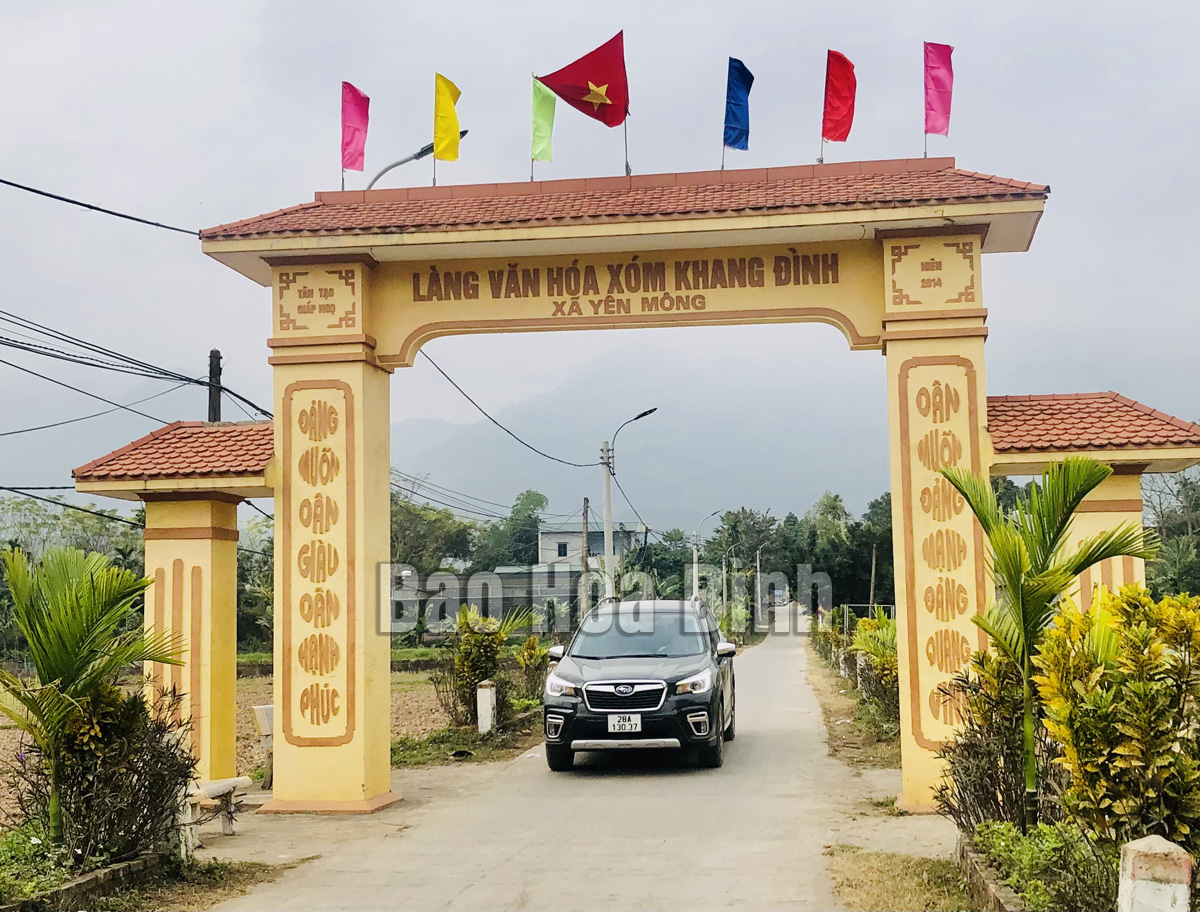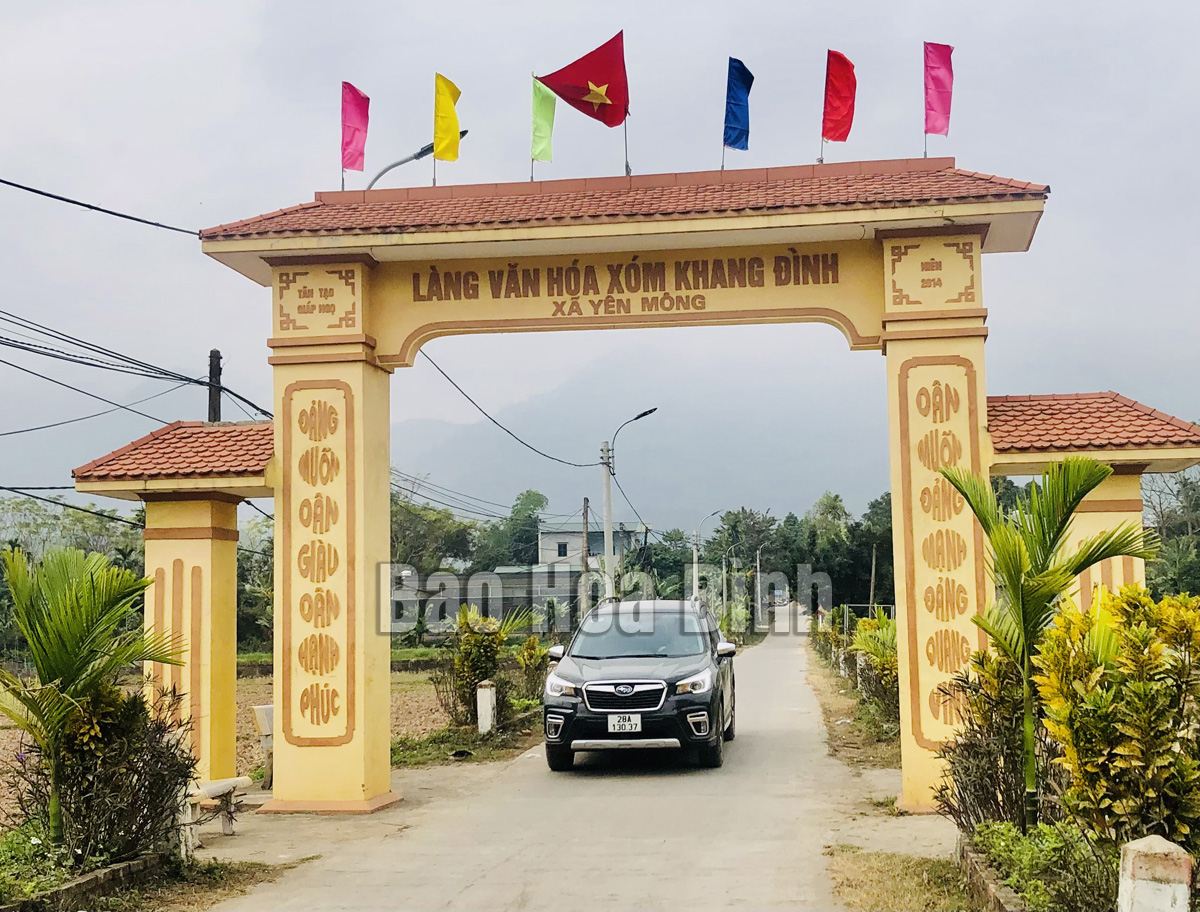
(HBO) – The Party Committee of Yen Mong commune in Hoa Binh city has been striving to make the Party’s resolution part of the local life across all fields. As a result, in 2021, the commune recorded positive changes, including upgraded infrastructure and better living standards.
Khang Dinh hamlet in Yen Mong sees 100
percent of its road concretized to facilitate local travel.
The Yen Mong Party Organisation has 189 members.
Last year, the commune’s Party Committee focused on political education and the
organisation of communications campaigns to spread the Party’s orientations and
the State’s laws and policies for Party members and other residents.
The committee identified economic development as
the top priority given complicated COVID-19 developments. As a result, the
commune ensured the supply of necessary goods serving local demand, while
industrial and handicrafts production was maintained, creating jobs and stable
income for local workers. Agriculture, forestry and fishery were still the key
sectors, with rice fields spanning nearly 200ha and producing over 1,000 tonnes
of the food last year. In addition, the commune sustained an aquaculture area
of more than 17.5ha whose total output reached about 40 tonnes. Yen Mong’s
annual per capita income was also raised to 65 million VND (2,858 USD).
The local Party leadership also paid a great
deal of attention to building advanced and model new-style rural areas. Yen
Mong completed a series of related criteria such as having a 45ha concentrated
goods production area, two cooperatives with stable operation, the rate of
health insurance coverage exceeding 95 percent, among others.
Nguyen Sy Linh, Secretary of the Yen Mong Party
Committee, said in the coming time, targets that are likely to be met earlier
are prioritised for implementation.
It also necessary to direct industries and
residential areas to do well in disease prevention and control along with
economic development in a bid to complete the local model new-style rural
building, the official noted./.
In the spirit of "Party members go first, the people follow”, all households of Party members in the Doan Ket sub-region in Da Bac town, Da Bac district, voluntarily removed gates and fences, and donated land when the road expansion project passed through their properties. Inspired by their example, 68 households in the sub-region quickly followed suit, contributing over 1,400 sq.m of residential and perennial cropland to widen the main road through the residential area. The exemplary role of Party members in Doan Ket stands as a shining example of studying and following President Ho Chi Minh’s thought, morality, and lifestyle.
The Hoa Binh provincial People's Committee held a monthly meeting on May 29 to assess the implementation of socio-economic development tasks in the first six months of 2025, the progress of key projects, and some other important issues.
During his lifetime, President Ho Chi Minh always expressed his deep affection and special concern for children and youth. He once emphasized: "Caring for and educating children well is the responsibility of the entire Party and the entire people”; "First of all, the family (i.e. grandparents, parents, siblings) must do this job well”. "the Party Committees…, the Children’s Committee, the Youth Union, the education sector, and all related organizations must have specific plans to ensure children grow healthier and more progressive”. His teachings has been remaining valuable and serving as the guiding principles in the work of protecting, caring for, and educating children. In line with this ideology, Hoa Binh Province has continuously been prioritizing and investing resources in the well-being of children in recent years.
Mr. Nguyen Phi Long, the alternate Member of the Party Central Committee and Secretary of the Provincial Party Committee chaired the meeting of the Standing Committee of the Provincial Party Committee to provide opinions on several investment projects within the province. There was the attendance of Ms. Bui Thi Minh, the Permanent Deputy Secretary of the Provincial Party Committee and Chairwoman of the Provincial People’s Council; Mr. Bui Đuc Hinh, the Deputy Secretary of the Provincial Party Committee and Chairman of the Provincial People’s Committee and other members of the Standing Committee; the leaders from other departments, agencies, and some localities.
The Standing Board of the Vietnam Fatherland Front (VFF) Committee of Hoa Binh province held a meeting on May 28 to honour outstanding village elders, village heads, and reputable individuals from local ethnic minority and religious communities.
In mid-May, the provincial Museum organised an exhibition named "Duoi la co Dang Cong san Viet Nam quang vinh” (Under the flag of the glorious Communist Party of Vietnam). This meaningful activity took place in the joyful atmosphere to celebrate the country's major holidays and the Party congresses at all levels for the 2025-2030 term, towards the 14th National Party Congress.



